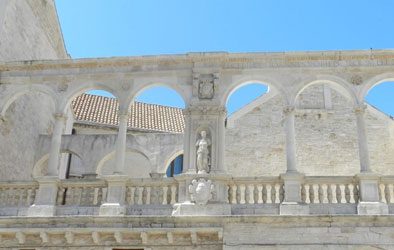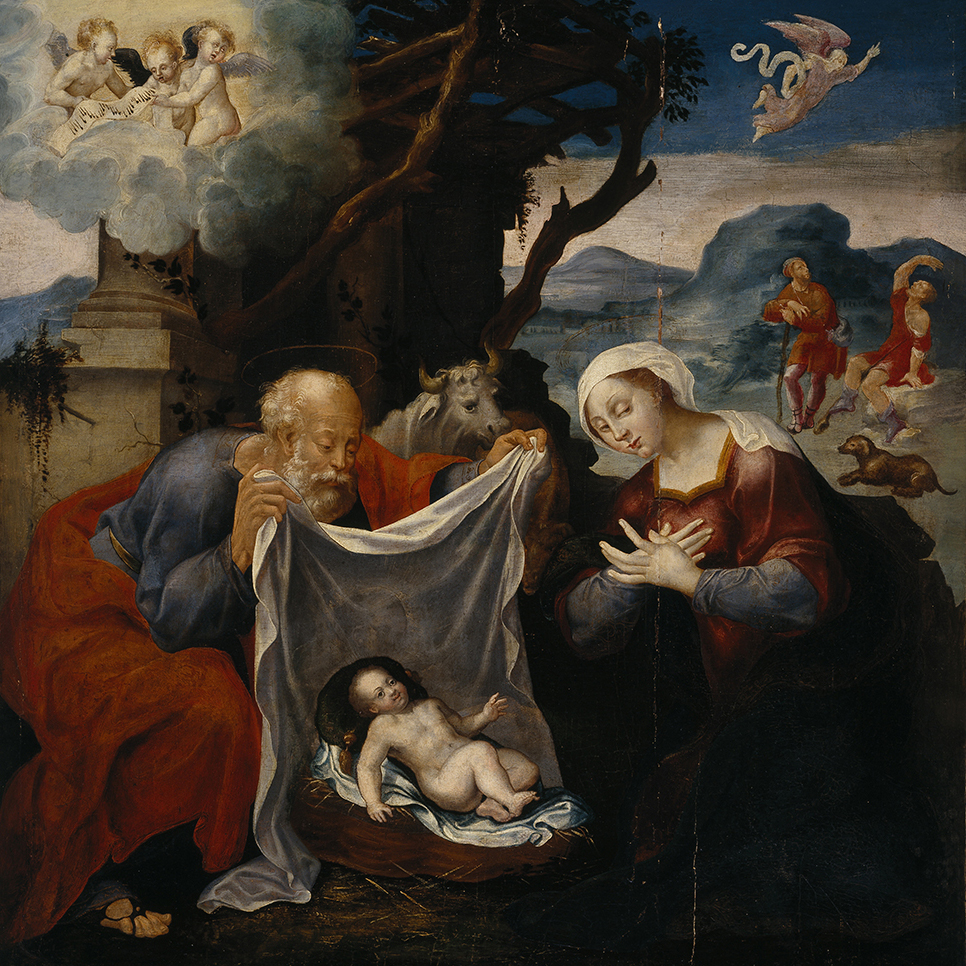National Gallery of Puglia ``Girolamo and Rosaria Devanna`` of Bitonto
 The National Gallery of Puglia “Girolamo and Rosaria Devanna” hosts an extraordinary
The National Gallery of Puglia “Girolamo and Rosaria Devanna” hosts an extraordinary
collection of works of art, such as to allow the public a real journey through the
major artistic currents of Italy and Europe between the 16th and 20th centuries.

Background
The collection is exhibited in the rooms of Palazzo Sylos Calò, the highest expression of Renaissance civil architecture in Bitonto.
The original medieval structure was subjected to massive restoration work, supervised by Giovanni Alfonso Sylos, exponent of the family who was originally from Burgos and arrived in Puglia in 1503.
The restoration ended in 1584 with construction of the elegant loggia overlooking the most important square of the ancient city. This last representative element of the building was an important fulcrum of the town square but was then dismantled in 1929 following a failure of the corner pillar and only reassembled in 1983.
The exhibition itinerary
The exhibited itinerary of the Gallery unfolds through five sections, from the sixteenth century to the twentieth century, organized according to a prevalently chronological criterion; the collection is made up of 354 works including paintings, drawings and sketches dating from the sixteenth century to the twentieth century and is the result of one passionate research conducted by the Devanna brothers on the antiques market, through exchanges with other collectors or private purchases.
The leitmotif of the collection is undoubtedly the taste for the discovery of the unprecedented, the curiosity for different forms of artistic culture, supported by a great intuition and an equally singular knowledge of the history of art.
The greatest interpreters of Italian and foreign figurative civilization are gathered in the museum, especially the sixteenth, seventeenth and eighteenth centuries, up to the representatives of “minor schools “, still certainly significant; there is no shortage of teachers and schools from the nineteenth century, Italians, French, Germans, English, up to the unique creations by contemporary artists, even from overseas. In July 2021 the National Gallery of Puglia opened the new room of the collections from the twentieth century thanks to an exclusive setting of the spaces on the top floor of the museum.
The itinerary opens with works created at the beginning of the new century which present ideal and formal characteristics in continuity with the movements and artistic experiences matured in the nineteenth century, including the preparatory sketch of Nel mare è il certame dei Regni by Adolfo De Carolis (1874-1928), Paesaggio con centauri by Plinio Nomellini (1866-1943) or the graphic studies by Adolfo Wildt (1868-1931).
An outstanding work is Nudo femminile by the young Man Ray made in 1912, which presents a fresh approach to the study of reality, and the avant-garde experiences of Italian futurism with Ritmi dinamici curvilinei scattanti by Giacomo Balla (1871-1958), tempera with an innovative square format dating back to the 1920s, a possible design for scarves or tiles inspired by French models, which is an example of the vastness of the creative horizons of the Turin artist.
Info and Contacts
Via Rogadeo,14 – Bitonto (BA)
Telephone: +39 080 099708
Director: Carla Scagliosi
Email: drm-pug.gallerianazionaledellapuglia@cultura.gov.it
Contact us for more information
The fields marked with (*) in addition to the acceptance of our Privacy and Cookie Policy, are required to send the message.





